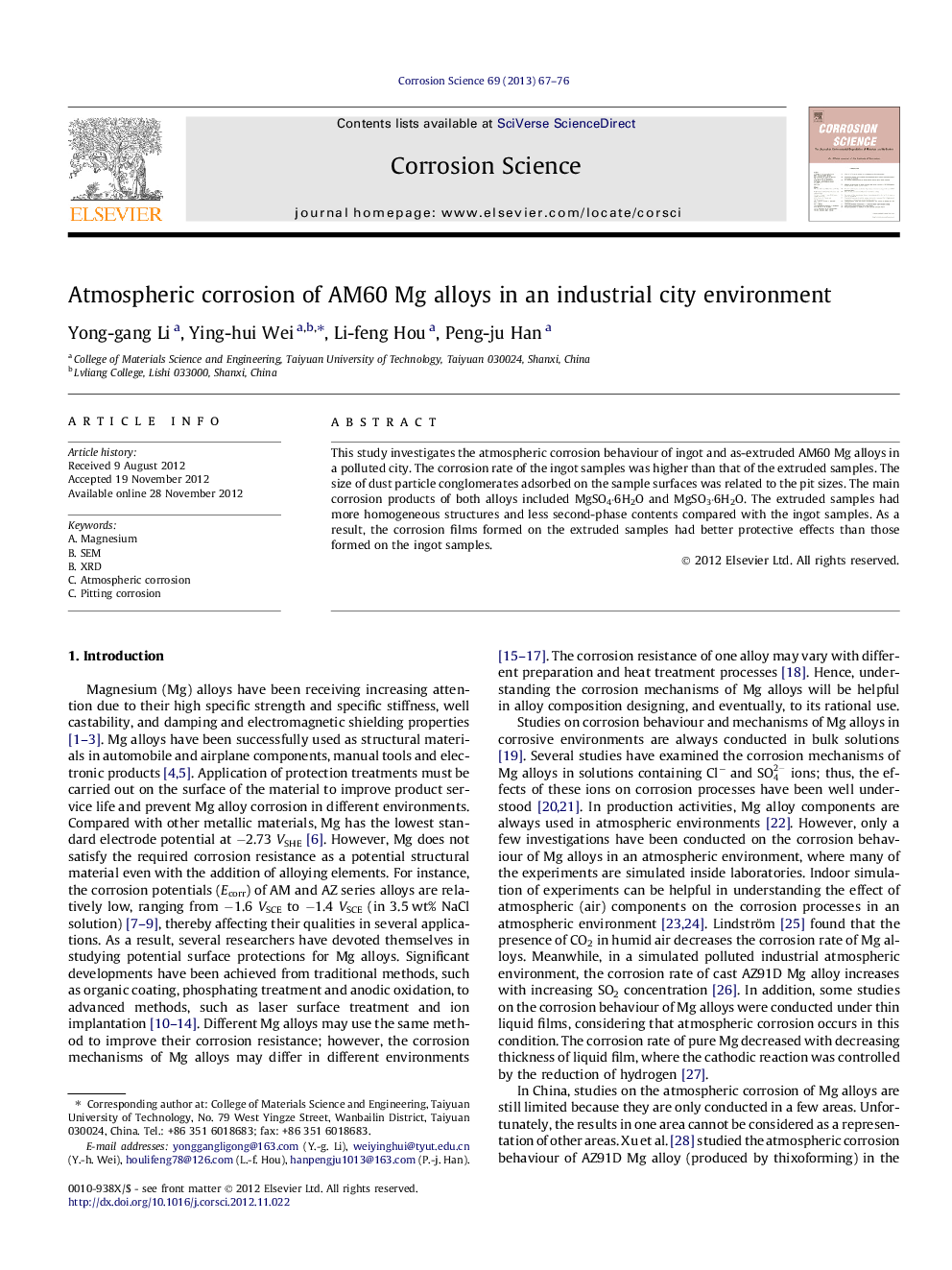| Article ID | Journal | Published Year | Pages | File Type |
|---|---|---|---|---|
| 1469242 | Corrosion Science | 2013 | 10 Pages |
This study investigates the atmospheric corrosion behaviour of ingot and as-extruded AM60 Mg alloys in a polluted city. The corrosion rate of the ingot samples was higher than that of the extruded samples. The size of dust particle conglomerates adsorbed on the sample surfaces was related to the pit sizes. The main corrosion products of both alloys included MgSO4·6H2O and MgSO3·6H2O. The extruded samples had more homogeneous structures and less second-phase contents compared with the ingot samples. As a result, the corrosion films formed on the extruded samples had better protective effects than those formed on the ingot samples.
Graphical abstractThe conglomeration states of the dust particles had a great effect on the initial atmospheric corrosion behaviour of the AM60 Mg alloy. The larger pit like one in site A was caused by the conglomeration of many dust particles with rough surfaces, whereas the smaller pit like one in site B resulted from the unconglomerated particles or single ones with smoother surfaces. Consequently, the pit sizes were relative to the conglomerate states of the particles on the alloy.Figure optionsDownload full-size imageDownload as PowerPoint slideHighlights► Atmospheric corrosion behaviour of AM60 Mg alloys was studied. ► The sizes of dust particle conglomerates were related to the sizes of pits. ► Corrosion rate of the ingot was higher than that of the extruded samples. ► The main corrosion products of both alloys were MgSO4·6H2O and MgSO3·6H2O. ► The extruded alloy with uniform microstructures showed a lower corrosion rate.
